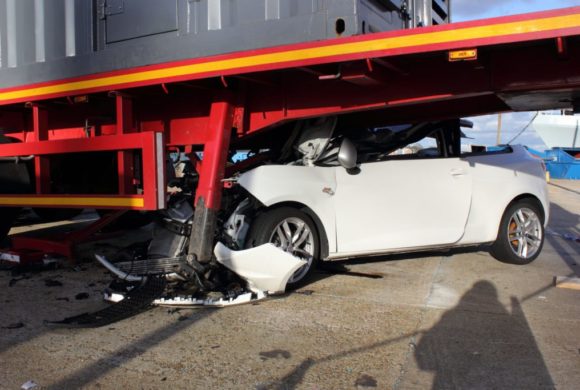
by Queener Law | Dec 19, 2014 | Auto Accident, Tennessee
Over 56 percent of American adults own smartphones with photo-taking abilities, according to a poll taken by Pew Research Internet Project. This gives millions of people the opportunity to take the perfect selfie and post it to their favorite social media website. However, a growing number of Tennessee motorists are taking selfies while they are driving. Not only does this increase the risk of a car accident, but it endangers the driver’s life as well as the lives of others on the road.
A picture for the road
CNN News reported how social media websites, including Facebook, Instagram and Twitter, all show thousands of posts of people taking pictures while behind the wheel, and many driver selfies include accompanying texts. In fact, more than 9,700 selfies were posted to Instagram recently under the hashtag #drivingtowork, and another 3,727 were found under #drivingselfie. Furthermore, the practice of taking a photo of yourself while driving is not limited to people operating automobiles. Motorcyclists, commercial truck drivers and even pilots have been seen snapping a pic while driving.
Dangers of selfies
In order to take a selfie, a driver has to remove their eyes from the road, their hands off of the steering wheel and their minds off of driving. All three of these activities are forms of distracted driving, which was responsible for the deaths of 3,328 people nationwide in 2012, according to distraction.gov. In order to take the perfect selfie, drivers have to get to the camera function on their cellphone, position the camera properly and take the picture. Many people go on to type a message or hashtag with the picture and post it to their profile page. Drivers who take the time to accomplish this daring feat are three times more likely to get in a car accident.
That is what happened to a 32-year-old North Carolina woman, who was posting selfies and updating her status on Facebook just one minute before being involved in a fatal car accident. The Huffington Post reported that the woman’s last text was posted at 8:33 a.m. and law enforcement officials were alerted to the accident at 8:34 a.m.
Distraction.gov reports that texting on a hand-held device while operating a vehicle in Tennessee is against the law, and those who are caught engaging in this activity will receive a citation. Whether motorists are stopped at a traffic light, driving, or having a passenger take the picture, it may be best to postpone the selfie until the vehicle is safely at rest.

by Queener Law | Dec 18, 2014 | Tennessee, Trucking Accident
Both truck driver negligence and equipment malfunction contributed to an enormous traffic accident involving three tractor trailers and two cars near Monteagle. According to the Chattanooga Times Free Press, motorists were injured when the axle of a commercial truck carrying eggs snapped in two, causing the truck to overturn and spill its contents across the highway. As traffic was stopped at the accident site, another tractor trailer collided with a third commercial truck, spilling cheese and meat onto the highway as well. Fortunately, no one was fatally injured in the accident.
This case is not an isolated incident. In fact, 3,802 U.S. motorists were fatally injured in large truck accidents in 2012. This is a significant increase from the 3,211 people who were killed in 2009, according to the National Highway Traffic Safety Administration. Tennessee’s large truck fatality rate has increased as well, from 86 deaths in 2009 to 107 deaths in 2012.
A closer look at equipment malfunction
Equipment malfunction, which caused the initial truck accident near Monteagle, can result in a devastating accident. According to the Federal Motor Carrier Safety Administration, trucking companies and truckers are responsible for ensuring that their tractor trailersare safe for the road. The trucker must inspect key components of the semi-truck, including the engine, lights, brakes, front suspension, drive axle suspension, drive shaft, axles and tires to make sure that everything is functioning properly. Routine maintenance should also be conducted on a regular basis.
FMCSA reported that in 2012, 20 percent of all large trucks were removed from service because they had too many equipment violations. That equates to more than 2.15 million trucks that did not meet safety or equipment requirements and could have potentially caused an accident.
Truck driver negligence
The second part of the accident in Monteagle occurred when a truck driver was allegedly speeding and failed to stop with traffic at the site of the previous accident. The Insurance Institute for Highway Safety states that it can take a loaded commercial truck nearly 40 percent longer than a passenger vehicle to come to a complete stop. In order to avoid rear-ending the car in front of them, truckers must leave ample space between their truck and the car ahead, and be sure to drive within the posted speed limit. In some areas, the commercial truck speed limit is lower than the speed limit posted for passenger vehicles.
Truck drivers can minimize the risk of an accident, injury and death by refraining from driving while distracted, drowsy or impaired. They should also always perform an equipment inspection before hitting the open road.

by Queener Law | Dec 17, 2014 | Auto Accident, Tennessee
Devastating motor vehicle accidents claim the lives of thousands of Americans every year. For young children, however, car accidents continue to be the number one cause of death, according to the Centers for Disease Control and Prevention. Tennessee children who are traveling in a vehicle, walking, getting off of the bus or waiting at the bus stop are in danger of becoming victims of devastating car accidents.
The facts
According to the National Highway Traffic Safety Administration, 1,363 children under the age of 15 years old were killed in motor vehicle accidents nationwide in 2012. That same year, Tennessee lost 29 children in tragic vehicle accidents. Sadly, many of these deaths could have been prevented. Driver distraction is one key contributor to auto accidents resulting in child death or serious injury. Parents who are negligent in securing their child’s car seat into the vehicle are another major contributor to the high rate of children killed in motor vehicle accidents in the country.
Safety restraints
When car seats are used properly, they can reduce the risk of injury and death by 71 percent for infants under the age of one, and by 54 percent for toddlers between the ages of one and four. Children from four to eight years old are 45 percent less likely to be injured or killed in a car accident when they use a booster seat, and older children reduce their risk by half when they wear a seat belt.
A study conducted by the CDC found that during the course of one year, more than 618,000 kids twelve years old and younger rode in a vehicle while they were completely unrestrained on at least several occasions. Some children who were involved in a car accident had been placed in a booster or car seat that was not secured in the vehicle properly.
This was the case in a recent Wilson County car accident. According to WKRN News, two children were rushed to the hospital and one had to undergo a surgical procedure after the car they were traveling in flew off of the road and went airborne after hitting a driveway. While the vehicle was in the air, it collided with a tree. Although both children were in car seats, their seats were not actually fastened into the vehicle. The 5-year-old and three month baby were fortunate to escape with their lives. The driver faces charges of negligence and failure to exercise due care.
Child pedestrians
Children who are walking to and from school or are simply waiting at a bus stop are also at a higher risk of being hit by a distracted driver. Certain state laws require drivers to reduce their speed in school zones, and stop their vehicle when a bus has released its stop sign in order to protect children. However, their small stature places them at greater risk for being involved in an accident.
In an attempt to keep children safe, many schools across the nation are teaching children to be extremely cautious when traveling to school on foot or on bus. Drivers are also encouraged to ensure their child seats are properly fastened before placing their children in them.

by Queener Law | Dec 16, 2014 | Auto Accident, Tennessee
Driving at night can be daunting for drivers of all ages. Older and younger Tennessee drivers may experience a lack of confidence when traveling through the dark, as it may be harder to determine how far away a vehicle is and how fast it is going. Some drivers may have difficulty handling bright light reflections and glare from oncoming headlights as well. In fact, there are three common factors that can affect a motorist’s ability to drive safely at night and avoid an unnecessary car accident or injury.
Low-light conditions
Most everyone has some level of difficulty seeing in low-light conditions. As people age, however, changes are more likely to occur. According to Harvard Health Publications, the eye muscle that adjusts in size in order to control how much light enters the eye loses its strength over time. While these changes may not be as obvious in bright light conditions, night-time drivers are more likely to notice the difference. The number of rods, or cells that are crucial for night vision, that are located in the eye decrease as people get older, and their lens may become cloudy as well. All of these physiological changes can contribute to bad night-time vision.
Decreased reaction time
According to the National Safety Council, vision contributes to at least 90 percent of a driver’s reaction time, which can be impaired in low-light conditions. This visual impairment can lead to decreased reaction time to other drivers’ erratic behavior, people or objects in the road and inclement weather conditions, resulting in a car accident. Distracted motorists who are driving at night pose an even greater risk to other motorists and pedestrians on the road.
Bright lights, reflections and glare
When bright lights are shined directly in a person’s line of sight, the light tends to scatter within the eye causing disability glare, according to the National Highway Traffic Safety Administration. Not only can disability glare decrease the distance that drivers are able to see, but drivers are more likely to react quicker and experience faster recovery times as a result of the bright light.
Young drivers are often inexperienced when it comes to driving in low-light conditions. Unfortunately, this led to a tragic accident involving an SUV with four teenagers and a large tractor trailer, according to WKRN News. Two teenagers were sent to the hospital with life-threatening injuries, while two other teens were pronounced dead at the accident site. The teen driver allegedly paused briefly while making a left-hand turn in front of an approaching tractor trailer. The truck was not able to stop in time and crashed into the vehicle.
Since most people who engage in night-time driving are affected by some degree of glare, limited eyesight or a decreased ability to respond to a situation, they are encouraged to drive cautiously. People should give themselves plenty of time to get where they are going, and avoid distracted driving in order to ensure safe travel.

by Queener Law | Dec 15, 2014 | Tennessee, Trucking Accident
It takes a highly skilled and trained driver to operate a large commercial truck weighing up to 80,000 pounds. These massive vehicles pose a significant threat to Tennessee motorists when the trucks are operated by incompetent drivers. People who have been involved in a devastating truck accident may have sustained a severe injury, extensive property damage and emotional trauma. Some may have lost a loved one as a result of truck driver negligence. It may be difficult to determine who to hold liable for the extensive damage created in a complicated truck accident. Although many people place the blame solely on the negligent truck driver, the trucking company may also bear responsibility for the collision, and the turmoil it creates.
Truck company responsibilities
Truck companies are responsible for hiring qualified truck drivers who are able to do their job well. Some of their responsibilities include:
- Ensuring that all drivers have taken and passed a drug test and criminal background check.
- Ensuring that all drivers have a clean driving record, free from any significant accidents or penalties.
- Ensuring that all drivers have a valid commercial driver’s license that has not been altered in any way.
- Ensuring that each truck in the fleet is functioning properly, and that all safety equipment is well maintained.
According to the American Trucking Association, there are currently 30,000 to 35,000 available truck driving positions in the U.S. and more freight than trucking companies can handle. In an attempt to meet strict deadlines and move more freight, some trucking companies may ignore federal Hours of Service regulations, which dictate how much time a driver can spend behind the wheel.
Case in point
A high-profile truck accident involving famed actor and comedian Tracy Morgan brought national attention to the issue of negligent trucking companies and truck drivers. According to Businessweek, Morgan and several other passengers who were traveling in a limousine that was rear-ended by a commercial truck have filed a third-party lawsuit against the trucking company responsible for hiring and scheduling the truck driver.
The well-known trucking company had sent the driver to pick up his truck, which was located 700 miles away from his residence in Georgia. Once the truck driver arrived in Delaware, he picked up his 40 ton tractor trailer and started his normal driving shift. When he smashed into Morgan’s limousine in New Jersey, he had been awake for 24 hours. In addition to violating the Federal Motor Carrier Safety Administration’s restrictions on driving time, the tractor trailer involved in the accident was equipped with advanced safety technology that was not working properly when the accident occurred.
Trucking companies can be held liable for any damage, injuries and loss of life that occurs as a result of driver negligence, according to a legal doctrine referred to as respondeat superior. This theory simply states that an employer may be held liable for their employees’ actions if they occur within the realm of their employment. The exact liability charges are ultimately dependent on each unique truck accident case.

by Queener Law | Dec 11, 2014 | Auto Accident, DUI, Tennessee
While U.S. drunk driving fatalities increased by 4.6 percent from 2011 to 2012, Tennessee saw a 14 percent increase in the number of people killed by drunk drivers during that time, according to the National Highway Traffic Safety Administration. Mothers Against Drunk Driving reported that 295 people were killed in Tennessee as the result of drunk driving car accidents in 2012, accounting for 29 percent of all motor vehicle accident deaths in the state. In an attempt to lower this high fatality rate, Tennessee lawmakers have enacted legislation to keep drunk drivers off of the road.
What is considered drunk driving?
In Tennessee, people with a blood alcohol content level of 0.08 percent or higher are considered intoxicated, and may be charged with a DUI. People who drive with a BAC of 0.08 percent may have trouble perceiving the distance and speed of other vehicles on the road, according to the NHTSA. They may also experience short-term memory loss, concentration problems and the inability to control their speed.
Drivers with higher levels of intoxication may find it difficult to stay in their lane of traffic, and are less likely to respond to emergency situations. All of the dangerous effects of alcohol intoxication place other motorists in danger of serious injury or death if they become involved in an automobile accident.
What is Tennessee doing about the problem?
MADD reports that approximately one-third of all people who are convicted of drunk driving have been arrested or convicted of a DUI in the past. In response to the significant increase in drunk driving deaths in Tennessee, the state enacted a law requiring all convicted DUI offenders to get an ignition interlock device installed in their vehicles, according to MADD. These cellphone-sized devices are essentially small breath test analyzers that prevent the vehicle from starting if the driver’s blood alcohol content level is above a preset limit.
Ignition interlock devices have proven to be successful in keeping drunk drivers off of the roads in many states, as reported by MADD. Convicted drunk drivers in Tennessee are also required to perform community service, pay fines and court costs and enroll in a court-ordered DUI education course. They will also have their driver’s licenses suspended for a time depending on the specific circumstances of the crime.
By enforcing the new ignition interlock device law, as well as the other strict legal consequences of drunk driving, Tennessee hopes to see a decrease in the number of drunk driving deaths in the future.






